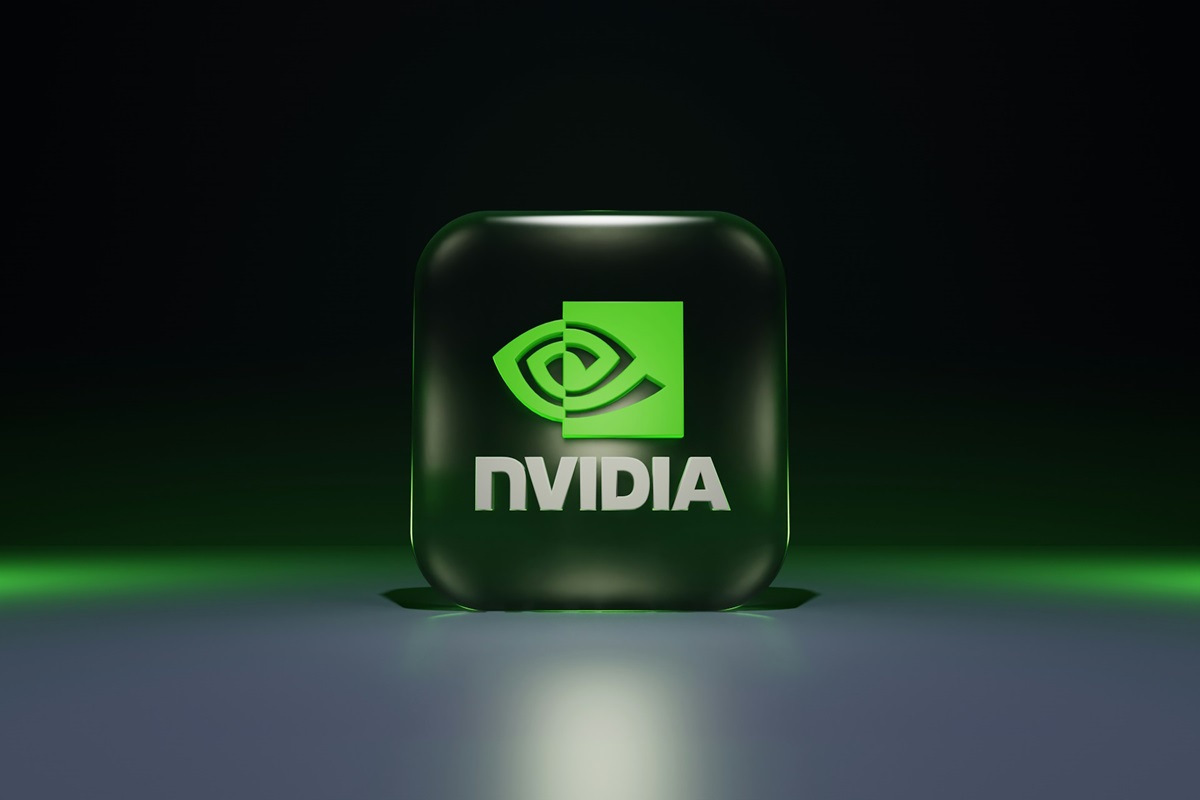Last Monday, January 6, Nvidia revealed new chips for desktop and laptop personal computers using the same Blackwell architecture underpinning the company’s fastest artificial intelligence processors for servers and data centers.

The mentioned firm reported that the chips, dubbed the GeForce RTX 50-series, will be pre-installed in computers that range in price from $550 to $2,000. Shipments of laptops equipped with these microcircuits will be started in March.
Nvidia has unveiled new processors at CES, which is taking place in Las Vegas. The company’s chief executive officer Jensen Huang delivered a keynote address on Monday.
It is worth noting that Nvidia is one of the main beneficiaries of the so-called artificial intelligence boom. The corresponding fact is reflected in the financial indicators of the company. Amid the AI boom, Nvidia’s market capitalization has exceeded the $3.5 trillion mark. The company develops graphics processing units for training and ensuring the implementation of the process of subsequent operation of artificial intelligence systems. Currently, there is a high level of consumer demand for the corresponding Nvidia products. This demand is largely provided by technology giants, including, for example, Microsoft, which announced last week its intention to invest $80 billion in AI-enabled data centers.
Nvidia’s clients are also cloud vendors. Before the boom of artificial intelligence, the company was known primarily as a developer of graphics processing units to power video games. Nvidia’s first chip, which debuted in 1999, was designed to quickly draw triangles and polygons for 3D games.
Justin Walker, senior director of products at Nvidia, said on a press call that more than 20 years ago the brand was a gaming company, and at that time its graphics processing units were designed to speed up games.
Currently, Wall Street is not enthusiastic and does not perceive the gaming business of the firm through the prism of optimistic expectations. The corresponding perception is because nowadays the main global technological trend, which has, among other things, a financial dimension of its existence, is the highly intensive development of artificial intelligence. AI has already demonstrated impressive consumer audience capabilities related to processing huge amounts of information and generating original content based on user requests. Also, artificial intelligence is already being used in some industries as a working tool that has a high level of efficiency and has a beneficial effect on the commercial results of companies. This means that AI can become a platform for economic growth on a global scale. Moreover, futurological forecasts suggest that over time, machine intelligence in the course of its technological evolution will be able to transform into an autonomous form of consciousness capable of independent progression and surpassing the human mind in terms of cognitive abilities. These are significant prospects that mean huge monetization opportunities for investors. However, it is still not definitively known what form of existence artificial intelligence will have at its peak. It is possible that AI will become a kind of new stage in the intellectual development of intelligent life in the global sense of the corresponding definition. The potential implementation of such scenarios will mean a groundbreaking transformation of the state of affairs in the world that is familiar to human civilization. Unknowing the limits of the development of artificial intelligence may be perceived by some investors as a deterrent or as a circumstance that makes them doubt and reduce their enthusiasm for the prospects for further technological progress driven by AI. At the same time, this in no way negates the fact that making financial injections in machine intelligence is a long-term strategy, the implementation of which can generate huge economic benefits. Against this background, the secondary importance of the gaming business as a prospects area is obvious. At the same time, the relevant industry continues to exist, and develop and does not show even minimal signs or hints of the beginning of a movement in the direction of downturn, bordering on non-existence. However, investors are more focused on artificial intelligence, even though there is still no understanding of when exactly the full financial return from efforts in this area will be recorded. Whatever revenue the gaming industry demonstrates, AI as a technology contains the potential to change the world as a functional human habitat and the potential for new achievements in the exploring universe will be more promising from an economic point of view.
Currently, the demand for processors necessary for the training and functioning of artificial intelligence systems is not only at a high level but also continues to move along an upward trajectory. Moreover, developers are interested in emerging more powerful processors of the appropriate category. Nvidia can satisfy this request from the technology sector. This fact determines the significant financial prospects of the company. Nvidia already has impressive commercial results driven by the artificial intelligence boom. At the same time, the company can achieve new records in the relevant aspect of its business. This probability is because the artificial intelligence industry continues to develop intensively, and Nvidia demonstrates a steady ability to elaborate graphics processing units necessary for the functioning of AI systems.
Returning to the topic of the company’s gaming business, it is worth noting that its commercial importance is gradually fading, although it has not yet fallen to zero. In the quarter that ended in October, Nvidia’s gaming sales accounted for less than 10% of the firm’s total revenue. It is worth noting that a similar sales figure for data center chips was recorded at 88%.
Currently, Nvidia takes a kind of position of unequivocal dominance in the global market of graphics processing units for artificial intelligence systems. The company is significantly ahead of its competitors, the main of which are Advanced Micro Devices (AMD) and Intel.
At the same time, CES is all about consumer products, and the new chips announced on Monday are primarily for gaming.
Nvidia said that the RTX 50-series microcircuits will support a feature called DLSS 4, which uses artificial intelligence to boost gaming frame rates. These chips can also display the faces of characters in greater detail and will generally provide users with better graphics and higher resolution.
It is worth noting that Nvidia’s gaming business is showing growth, despite the lack of enthusiasm for this area of the company’s activity from investors and a small share in the brand’s total revenue structure. In the last quarter, the mentioned business of the firm generated revenue, which is 15% higher than the same indicator a year ago. At the same time, data center sales have at least doubled for six consecutive quarters, topping $30 billion in the most recent period.
Nvidia said that the technical improvements made to its large-scale business in the area of artificial intelligence will trickle down in graphics cards for games.
Justin Walker stated that the company is currently an AI brand and a gaming firm. In the relevant context, it was separately noted that Nvidia’s gaming business benefits enormously from the company’s activities related to artificial intelligence.
The Blackwell graphics processing units architecture and core design debuted in the firm’s AI accelerators, which were announced in March and started shipping last year. The company stated that the mentioned GPUs were designed and optimized to run neural networks used by OpenAI’s ChatGPT and Google’s Gemini.
Nvidia’s new chips for personal computers and laptops will come in several different configurations. The company said that the most expensive and powerful of the microcircuits, the RTX 5090, will be sold individually for $1,999 and will be twice as fast as its predecessor, the RTX 4090. Nvidia noted that the new flagship chip has 92 billion transistors. At the same time, the graphics processing unit B200 for servers has 208 billion transistors. Sales of the RTX 5090 will begin at the end of the current month, with less powerful cards following later. The RTX 5070 will debut in February. This chip will cost $549 and will have better performance than the RTX 4090.
Nvidia said the new microcircuits will be optimized to run artificial intelligence models and do computer graphics, not just to run the latest games. It was also noted that chips will be powerful enough for some game makers to integrate generative machine intelligence into their characters in games like PUBG: Battlegrounds.
Besides, Nvidia has stated that the new processors will be powerful enough to run large language models and image generation models from companies such as Meta, Mistral AI, and Stability AI.
The company is currently striving to be at the forefront of artificial intelligence computing. Nvidia’s vision in the context of its own development in the space of the current reality of the technology sector is wide-ranging. The company aims for its products to become a kind of core of the future technological world, in which there will be 1 billion humanoid robots, 10 million automated factories, and 1.5 billion self-driving cars and trucks.
In Las Vegas, Jensen Huang spent over 90 minutes talking about Nvidia’s products and strategy. In this case, among other things, attention was paid to the company’s cooperation with Toyota Motor Corp. and MediaTek Inc.
The value of Nvidia shares on Tuesday, January 7, increased by 1.5% in premarket trading. On Monday, the corresponding indicator rose by 3.4%, reaching $149.43 per equity. Over the past 12 months, the value of Nvidia shares has increased by about 204%.
The next move in scaling the company’s activity strategy will be rolling out hardware and software to a larger swath of business and government agencies. It is expected that the implementation of these intentions will help to diversify Nvidia’s revenue.
Jensen Huang said that Toyota is now a customer of the company he heads. The automaker is interested in autonomous driving artificial intelligence products. Toyota will also use Drive chips and software. After Jensen Huang’s statement, the value of the automaker’s shares in Tokyo showed growth.
Nvidia has stated that extending artificial intelligence into more of the physical world will transform industries worth $50 trillion. However, the corresponding process will generate certain challenges. Robots and cars will need software that can safely handle complex tasks in real life.
Jensen Huang also stated that the company he heads created Nvidia Cosmos. In this case, the goal is to help make robots smarter and produce fully autonomous vehicles. Cosmos technology allows consumers to generate videos from inputs such as text. Then this visual content becomes the basis for virtual training. As part of the appropriate solution, dependence on expensive and time-consuming experiments in the real world is reduced. The generated video can be searched and honed so that important but infrequent events such as a car’s encounter with an emergency vehicle can be tested repeatedly.
Nvidia also collaborates with Uber Technologies Inc. In this case, the interaction between the two companies is focused on the development of self-driving technology. The millions of trips that Uber handles daily will become a data source for training artificial intelligence models.
Nvidia also stated that mass-market automakers intend to shift towards using one computer and operating system for the entire model range. It was also noted that the relevant companies do not seek to segment systems by vehicle class. Nvidia assumes that the mentioned transformation of the automakers’ business strategy will generate conditions for wider use of comprehensive chipmakers’ offerings. To speed up the relevant process, the company had its products certified by government transportation safety organizations.
Moreover, Nvidia now offers consumers the desktop personal computer Project Digits. The price of this device is $3,000. Project Digits is equipped with a single Grace Blackwell Superchip, a combination of central processor and graphics semiconductor. The super chip has a large chunk of memory and fast connectivity. In this case, the idea is to provide hardware capable of running very large artificial intelligence models to developers. These are the AI models that the current laptops will struggle to handle.
The new machines were developed in partnership with MediaTek and will run a version of the Linux operating system. It is worth noting that these machines are not designed for everyday use. In this case, the goal is to provide artificial intelligence developers with the opportunity to work locally when connecting to the cloud or using conventional computers is impractical or impossible.
Nvidia claims a single Project Digits unit can run AI models with up to 200 billion parameters in size. The parameters roughly correspond to the skills of artificial intelligence models to solve problems. AI systems with a large number of parameters generally perform better.
Amid Nvidia’s statements and the debut of its new products, Asian chip-related stocks showed growth. The upward dynamic is due to optimism about the prospects for demand for artificial intelligence.
In Japan, Nvidia chip gear suppliers are Tokyo Electron Ltd., Advantest Corp., Disco Corp., and Lasertec Corp. Against the background of the news from Las Vegas, the value of the shares of these companies increased by at least 6%. In Taiwan, the securities of Nvidia assembly partner Hon Hai Precision Industry Co. rose by 4.1%. The value of shares of Taiwan Semiconductor Manufacturing Co. increased by 3.1%.
Japanese chip package substrate maker Ibiden Co., which supplies Nvidia, is highly likely to be a beneficiary of Jensen Huang’s plan to roll out Blackwell at a massive scale. On Tuesday, the value of the company’s shares increased by 7.7%. This upward dynamic is the most intense in the last two months.
Japanese chip-making equipment manufacturers are the winners of the ongoing technology rally. The relevant tendency is to some extent related to the fact that many of the corresponding companies were heavily sold during the year-end position.
Bank of America analyst Vivek Arya, commenting on Nvidia’s wide-ranging intentions, said it remains to be seen whether robotics will become the driving force behind the firm’s sales growth. In the relevant context, it was noted that robotics could become another niche opportunity, such as a metaverse or autonomous car. At the same time, this statement can be described as relevant from the point of view of its correlation with the current configuration of the reality of the technology sector. Autonomous vehicles and the metaverse are long-term strategies of development. These are points of global technological evolution that provide groundbreaking progress but cannot be scaled in the shortest possible time. The lack of rapid and massive implementation in the context of the metaverse and autonomous vehicles does not mean that this format of kind of experimental deployment will be permanent and will not transform into something more. In a certain sense, the metaverse is a logical form of existence of the digital dimension of reality in the context of its sequential evolution. Virtual space is expanding, ceasing to be a kind of conditional roadside of what the collective human consciousness identifies as true life in its original existential form. The digital environment is gradually becoming a full-fledged type of reality. For this reason, the metaverse is something that, in the context of the logic of technological progress, must necessarily happen.
At the same time, robotics is still not a guaranteed sales drive force for Nvidia. The corresponding technological idea has been around for a long time, but the robotic future as a large-scale part of material reality has not yet arrived. Artificial intelligence can potentially accelerate the process of moving toward the mentioned configuration of material reality.
It is worth noting that, in one way or another, Nvidia is the main supplier of a material base for the further development of technological progress, which is why the company’s prospects are favorable. For example, a chip is an initial unit necessary for the elaborating and continued existence of the digital ecosystem of artificial intelligence. Scaling Nvidia’s activity, both qualitatively and quantitatively, is, in a sense, a natural process for a company on a trajectory of success.









